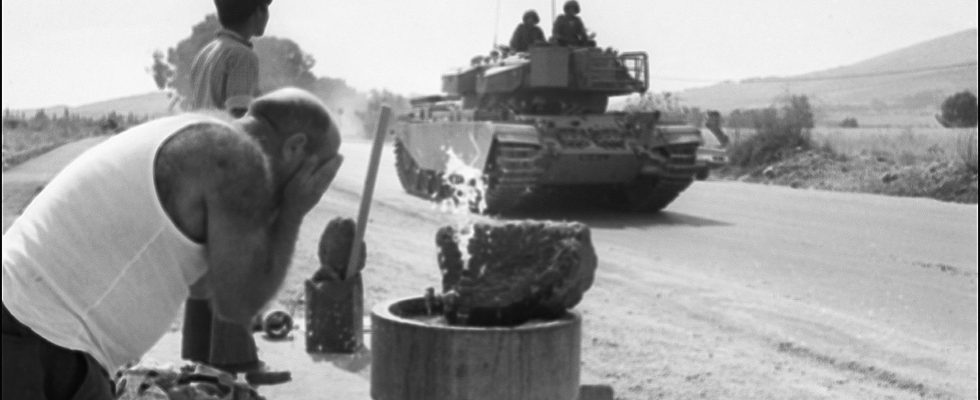The fourth and final interstate Israeli-Arab war of October 1973 remains the least studied, devoid of the romanticism of the creation of Israel in 1948 in terrible conditions, of the involvement of Paris and London as during the Suez campaign of 1956, and any link with Jerusalem or the Palestinian question as during the Six Days of 1967. However, very deadly (around 25,000 soldiers killed in less than three weeks, two gigantic tank battles, aerial and naval combats, etc.), she revealed and illustrated five realities which are all very contemporary lessons.
1) After three military triumphs of the IDF, its staff had become arrogant, like the black-headband general Moshe Dayan, adored Minister of Defense. On the eve of the Syrian-Egyptian attack of October 6, he still boasted by ruling out a new war before “at least ten years”, since the Arabs would no longer dare to attempt it. Also, when 20,000 Egyptian soldiers set out to attack the Suez Canal, the first Israeli line was made up of around fifteen forts defended by… 450 shaggy and ragged conscripts, and three armored vehicles. On the other front, on the Golan Heights, the disproportion of forces is just as glaring. Underestimating the adversary is a major geopolitical error; the Armenian forces also committed it against those of Azerbaijan after their victory in 1994. Unlike Israel, which – ultimately – imposed itself on the battlefield – Armenia paid an excessively high price. heavy since his defeat in 2020 and up to the present day.
Old-fashioned tank
2) The Yom Kippur War marks the lasting relegation of the tank. Created in 1916 and deployed on the Western Front successfully by the Allies, quite decisive as a “fighting engine” (de Gaulle) in 1939-1945 then during the Israeli-Arab wars cited, the heavy armored vehicle was weakened by the quantity of missiles portable in 1973; since then, it has also suffered mines and especially projectiles from the new primordial weapon of the battlefield: the drone. The recent Armenian-Azerbaijani and Russian-Ukrainian combats clearly reflect this relegation of the armored juggernaut, otherwise subject to the vagaries of the terrain.
3) “Geography is primarily used to wage war”, according to the famous expression of Yves Lacoste. In October 1973, it came into full play at a time when strategic analysis severely neglected it: the reflections of the sun in the desert, the cones of frozen lava, the palm groves and the desert passes foreshadowed the Ukrainian autumnal mud, the width of the Dnieper or the coast of Odessa. And, basically, oil increased in price and rationed by the Saudis yesterday, Russian pressure on Ukrainian wheat today, that also comes down to geography.
4) Henry Kissinger’s tactical and diplomatic talent merges with the Yom Kippur War. Having just been appointed Secretary of State for Foreign Affairs by Nixon entangled in the Watergate affair, the brilliant academic who once had to flee Nazism took full charge of the issue and was going to take the USSR out of the Middle East game. Support (not unconditional) of the Jewish State, trusting in Sadat’s sincerity to conclude peace, he leads a subtle proactive policy, and manages to obtain a ceasefire advantageous to the Israeli ally while saving détente with Moscow. Once the weapons have been killed, he supports, via his policy of “small steps” then his pressure and promises, the peace of Camp David. The shift of Egypt into the American fold will thus remain one of its greatest feats of arms.
The courage of Anwar el-Sadat
5) Finally and precisely, this conflict is named after the courage and lucidity of Egyptian President Anwar el-Sadat. Nationalist general companion of the late Gamal Abdel Nasser, he understands that time is not on his side (despite the demographics) and that in order to develop it he must change alliance. As early as 1971, he had proposed peace with Israel to Washington through the return of Sinai. Without hope of breaking the status quo, he had finally made Clausewitz, or “war as the pursuit of politics by other means”. A war for peace by erasing the humiliation of 1967; Israeli prisoners treated less savagely than in Syria, a surprise visit to Jerusalem in 1977, the Camp David agreements concluded in October 1978, then the peace signed a few months later with Begin and under the aegis of Carter. Sadat will pay with his life for this courage, falling under the bullets of the fanatical Muslim Brotherhood. To this day, this peace treaty remains one of the most lasting and respected in the entire Middle East.
